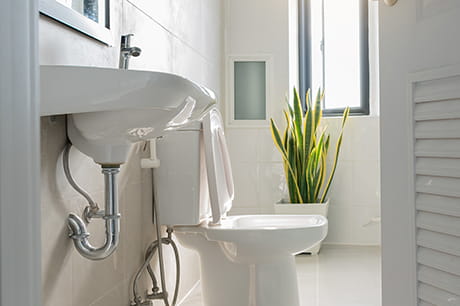Kegel exercises: What they are and how to do them
Learn how these simple exercises can help prevent urine leakage and other pelvic floor concerns.
You’ve probably heard of “Kegels,” but may not know what they are, why you should do them or how to do them. Dr. Sandra Culbertson, urogynecologist and chair of Geisinger Women and Children’s Institute, helps us understand what these exercises are and how they can help keep your pelvic floor in shape.
What are Kegel exercises?
Also called pelvic floor exercises, Kegels are exercises you can do to help strengthen your pelvic floor muscles. “The pelvic floor is the group of muscles and ligaments, shaped like a sling or hammock, that supports the pelvic organs,” explains Dr. Culbertson. “In women, this includes the bladder, uterus, vagina and bowels, and in men, it’s the bladder and bowels.”
Benefits of Kegels — and why you should do them
Both women and men can benefit from doing Kegel exercises. As we age, we can experience a weakening of our pelvic floor muscles, causing issues like incontinence and overactive bladder. Women can also experience conditions like pelvic organ prolapse, which occurs when the uterus, bladder or bowel falls or presses against the vagina.
Other factors can contribute to the weakening of these muscles, including:
- Pregnancy and childbirth
- Obesity
- Heavy lifting or straining
- Genetics
- Previous pelvic surgery or radiation treatments
Doing Kegel exercises to strengthen your muscles can help prevent or manage symptoms of incontinence and other pelvic floor concerns. They can also improve sexual pleasure for both women and men.
How to do Kegels
Once you learn how to do Kegel exercises, you can do them nearly anytime and anywhere — but start slowly and avoid overdoing them.
Since these are contract-and-release exercises, you should first locate and learn how to contract (or squeeze) your pelvic floor muscles.
For women and men, one of the easiest ways to find the pelvic floor muscles is by trying to stop and start the flow while urinating. “Only do this a few times to get a feel for it,” says Dr. Culbertson. “You shouldn’t start and stop your urine frequently, or practice Kegels when you have a full bladder.”
Now that you’ve located your pelvic floor muscles, you’re ready to start practicing. Here’s how:
- Sit or lie down, whichever is most comfortable for you.
- Squeeze your pelvic floor muscles for 3 to 5 seconds.
- Relax your muscles for 3 to 5 seconds.
- Repeat 10 times, 2 to 3 times per day. If you can’t do 10, do as many as you can and work up to it.
While doing your pelvic floor exercises, remember to breathe and relax your body. And make sure you’re not squeezing your stomach, thigh or buttock muscles.
“You should be able to do Kegels in public with no one being able to tell you’re doing them,” adds Dr. Culbertson.
How long does it take for Kegels to work?
Most people who practice consistently will notice an improvement in their symptoms after 4 to 6 weeks. Like other exercises, they work differently for everyone, so try to be patient.
“While Kegels aren’t necessarily harmful, they may not be right for everyone,” cautions Dr. Culbertson. “If your condition isn’t improving or worsens, or you feel pain while doing the exercises, stop doing them and talk to your doctor.”
When pelvic floor exercises may not be enough
Kegels, or similar exercises that involve contracting your muscles, may not be enough to treat your condition. Your doctor may refer you to a urologist or urogynecologist, an obstetrician-gynecologist (or OBGYN) who has special training in treating pelvic floor conditions in women, who can evaluate your condition and help you find a treatment that’s right for you.
“Kegels can be helpful in the prevention and management of pelvic floor conditions, but be sure to practice with caution and listen to your body,” says Dr. Culbertson. “If your symptoms are affecting your life negatively, don’t be afraid to seek the help of a specialist.”
Next steps:
Sign up for our email newsletter
Find a urogynecologist or urologist





